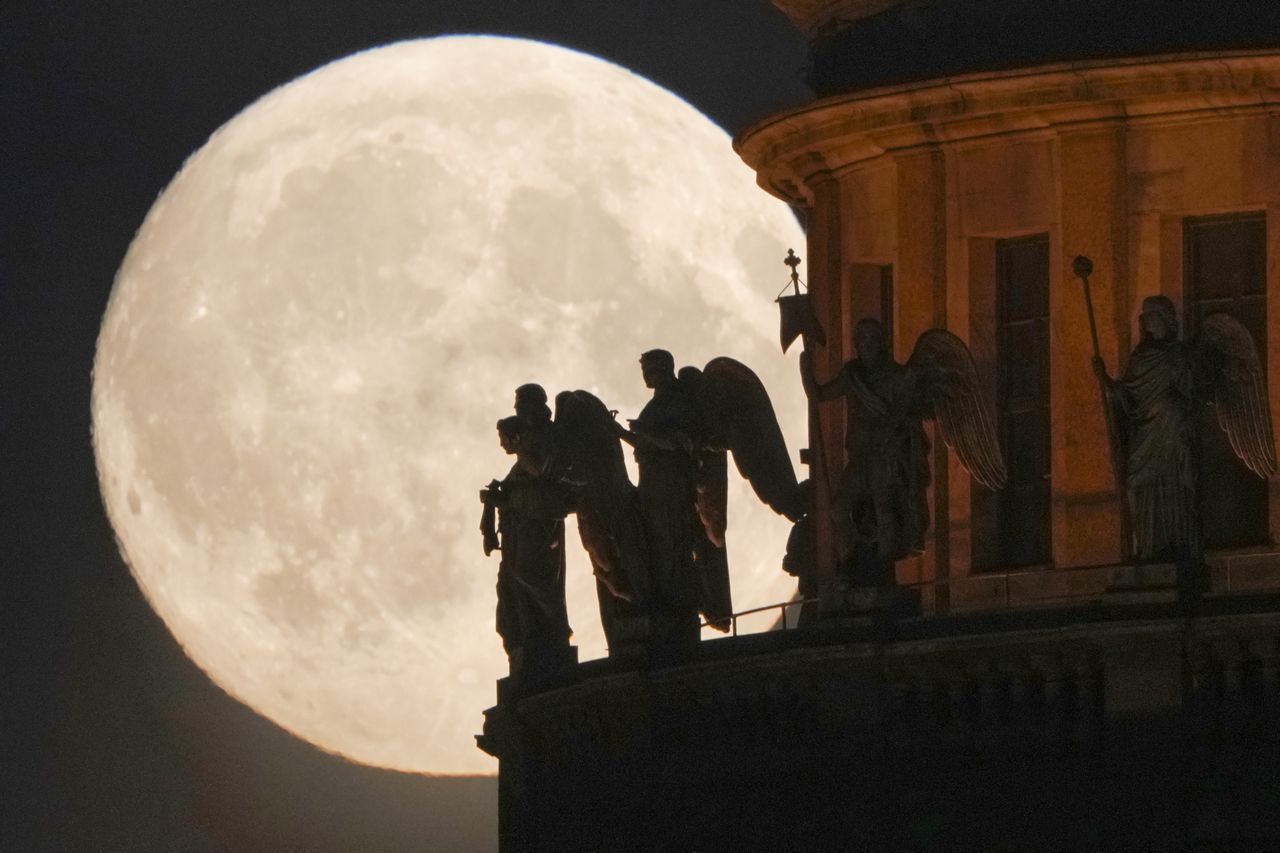
Two supermoons are expected to light up the night sky at the start and end of the month of August.
On Aug. 1 and Aug. 30, stargazers and everyone not under a cloudy night sky should have a chance to catch the Sturgeon Moon and gaze upon the Blue Moon, respectively.
Starting with the Sturgeon Moon, which will be the second supermoon of the year following the July 3 Buck Moon. This full moon is due to reach peak illumination at 2:32 p.m. Eastern Time and should be visible towards the southeast while it rises after sunset, according to the Old Farmer’s Almanac.
The Sturgeon Moon received its name because the giant sturgeon of the Great Lakes and Lake Champlain is typically caught during the summer, the Almanac said.
After this, the illuminated lunar face will recede with the moon being described as “waning,” Space.com said. This will eventually lead to the next new moon on Aug. 16. The new moon phase will evolve to the “waxing” phase and brighten until the end of the month.
Twenty-nine days later, the Blue Moon will be the third and second to last supermoon of 2023. It’s expected to be the closest, biggest and brightest full supermoon of the year, according to the Old Farmer’s Almanac. In terms of distance, the moon is expected to be 222,043 miles away from Earth, whereas the average distance between the two bodies is 238,855 miles away, according to NASA.
The Blue Moon’s name “is most commonly used when we have two full Moons in a single month,” the Almanac said.
The fourth supermoon, the Harvest Moon, is expected to reach its peak on Sept. 29, the Almanac reported. After that, there are not expected to be as many supermoons in 2024, with the first happening on Sept. 18 and the next on Oct. 18, Space.com said. The closest that the moon is expected to be during an upcoming supermoon is on Nov. 5, 2025, when the moon should be 221,817 miles from Earth, the Almanac reported.
This proximity to Earth when combined with its peak fullness in the sky is called perigee, according to Space.com. The opposite, when the moon is at the furthest end of its ellipse around Earth, is called the apogee.
Supermoons are also called “super” due not only to their proximity to Earth but also because of how much larger they appear when compared with a regular full moon. They exceed the moon’s average size in the sky by only up to 8% and increase in brightness by 16%, according to the Almanac.
The Almanac references other names used for this August’s moon cycle, including the Flying Up Moon, which the Cree people describe when young birds are finally ready to take the leap and learn to fly. The Algonquin and Ojibwe nations use the Corn Moon, the Dakota used the Harvest Moon, the Tlingit called these full moons the Mountain Shadows Moon, while the Assiniboine referred to it as the Black Cherries Moon, referring to the season when chokecherries ripen.
The National Weather Service anticipates partially cloudy conditions across Massachusetts on Tuesday, though the supermoon should be visible.
To learn when the supermoons are expected to peak, visit the Almanac’s moonrise and moonset calculator at the link here.






